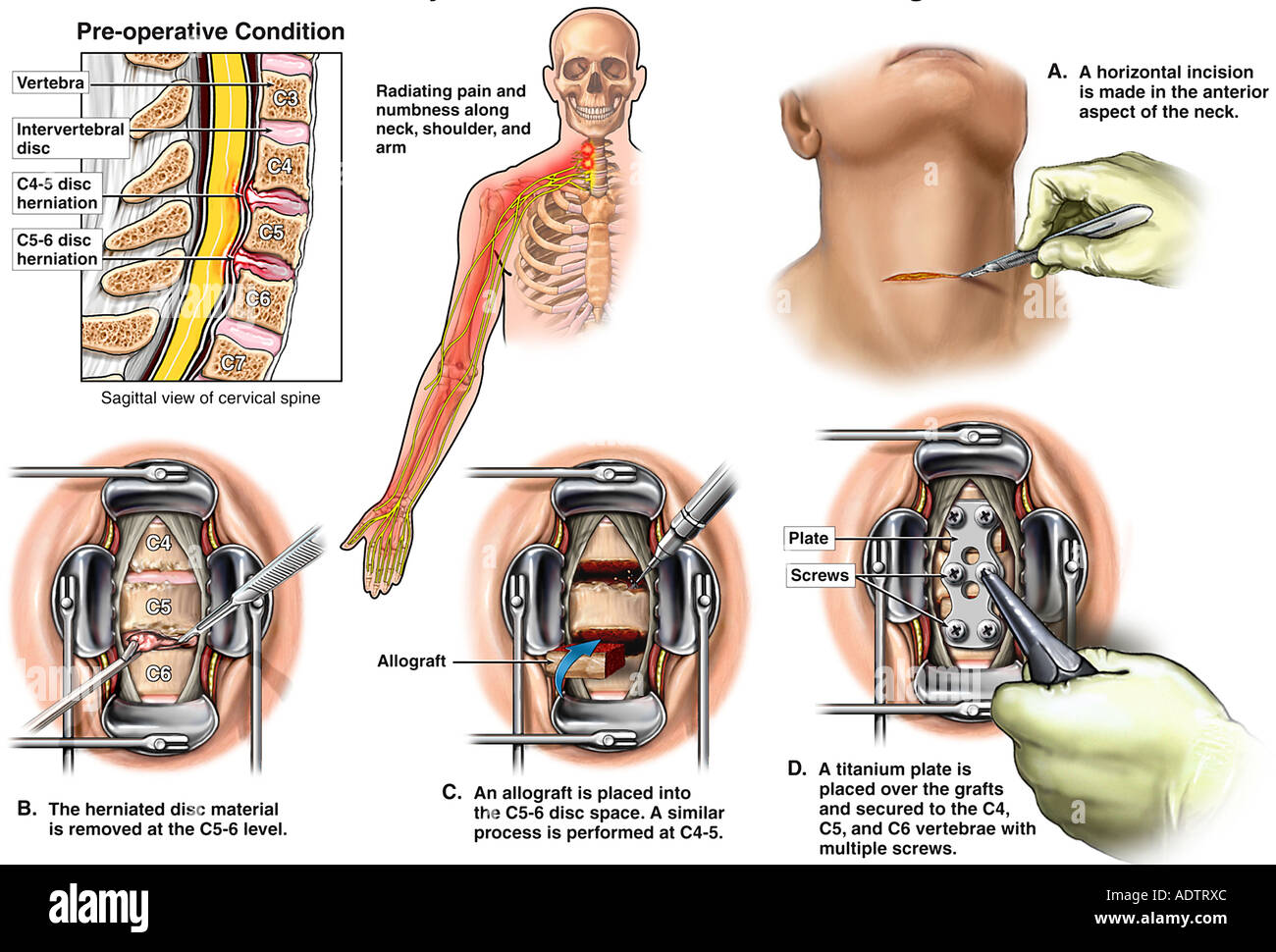

The procedure often requires supplemental fixation, most often in the form of pedicle screws, which can also be placed in a percutaneous minimally invasive fashion in the same setting or in a second-stage operation. This approach enables placement of an interbody graft into the disk space while minimizing the risks associated with anterior and posterior exposures. One alternative to traditional anterior and posterior approaches is lateral interbody fusion, which is performed using a lateral trajectory that can avoid abdominal and vascular structures as well as the spinal canal and nerves. Posterior surgery, including posterolateral fusions, posterior lumbar interbody fusions and transforaminal lumbar interbody fusions, can lead to dural tears and neural complications such as radiculitis. Anterior surgery requires a relatively morbid incision and may cause vascular complications, postoperative colonic obstruction or injury to the sympathetic chain. The tissue injury that occurs is not only associated with increased postoperative pain and a lengthy recovery time but also with significant complications. But traditional open anterior or posterior surgery requires extensive soft tissue dissection to expose the anatomic landmarks for screw insertion, achieve a proper screw trajectory and develop an acceptable fusion bed. Spinal fusion has been used to manage a variety of disorders of the lumbar spine, including tumors, spinal instability, deformity and stenosis. Otherwise, MISS becomes a mistake." Minimally invasive fusion surgery You need to be able to see what you need to see.
Spine fusion full#
"You need to select patients with focal disease that can respond best to small windows of exposure, and you cannot compromise on the aspects of surgery that have been proved to provide full decompression just because you are using minimally invasive techniques. "It is essential to do the same tasks in minimally invasive surgery that are done in open procedures," he says.

Freedman cautions that it is far more important to perform all the functions necessary to fully and safely decompress the nerves than to worry about the method used to expose them. Complication rates and length of surgery were also similar after propensity matching, but patients who underwent microdecompression had consistently shorter hospital stays.Īt Mayo Clinic, minimally invasive approaches are used when indicated. Using prospective data from a large national spine surgery registry, they compared outcomes for more than 800 patients who had undergone open laminectomy or microdecompression for stenosis of the lumbar spine.įavorable outcomes, as measured by change in the Oswestry Disability Index, were equivalent at one year. Norwegian researchers confirmed the equivalence of the clinical effectiveness of the two procedures in a multicenter observational study published in The BMJ in 2015. There are no long-term outcomes reported in the literature where minimally invasive techniques led to a better end result than traditional approaches," he says. "When minimally invasive lumbar decompression is performed well with the right patient, there are advantages in the early phase, but the final outcome should be the same as with open procedures. Freedman, M.D., an orthopedic surgeon specializing in spine surgery at Mayo Clinic's campus in Rochester, Minnesota. The reduction in trauma has been shown to reduce immediate negative effects, such as pain and disability, but not long-term outcomes, says Brett A. By utilizing sequentially larger tubes, the working channel is expanded without cutting muscle fibers. A tubular retractor system is used that dilates rather than dissects muscle. Minimally invasive approaches can spare these tissues and reduce collateral damage. This allows the removal of disk herniation and relieves pressure on spinal nerves, but the dissection of spinal muscles and supporting tissues can lead to pain and possible instability. In conventional diskectomy, for example, the paraspinal muscles are dissected from the posterior aspect of the lumbar spine and portions of the lamina are removed to gain access to the spinal canal. The goal of minimally invasive spine surgery (MISS) is to achieve outcomes equivalent to those of open surgery while minimizing muscle dissection, disruption of ligament attachment sites and collateral damage to soft tissues.


 0 kommentar(er)
0 kommentar(er)
